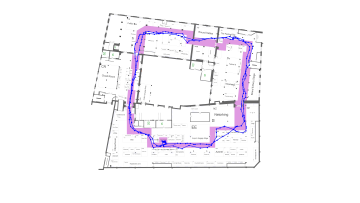Digital twin technology

Digital twin technology: Teenager already, maturing quickly to rule the world
Digital twin technology is 15 years old. A stroppy teenager? Abolutely not. More an enthusiastic, animated adolsecent. And one frequently blessed with location intelligence.
The inescapable explosion of IOT has given the digital twin term a new lease of life. Thanks to those clever minds over at Gartner – who featured it in their Top 10 Strategic Technology Trends for 2017, published back in March – it is now on steroids.
That’s easy to see why. But first…
What does ‘digital twin technology’ mean?
The term was originally coined by Michigan University boffin Michael Grieves, although initially it was narrowly applied to manufacturing. Essentially, digital twin technology is the bridge between the physical and the digital world. It is a digital representation (for which often read visualisation) of the physical. A virtual model of a product, service or process.
Fast forward to Gartner’s 2017 view: “In a significant number of IoT use cases, what is emerging as the most new and important related IT innovation is the digital twin representation that enables stakeholders the ability to monitor and make decisions about the actual thing.”
How does it work?
- Take any IoT device integrated with a physical asset (or a person) with sensors that harvest real-time data.
- Connect those sensors to a cloud-based platform.
- Upload all that sensor-harvested data.
- Process it – in real time, if required (or are able to).
- Represent it in human-readable, contextualised form.
Which, funnily enough, is precisely what our Colocator location intelligence platform does.
How does it relate to the Colocator platform?
We’ve taken the concept of digital twinning and applied it to a specified physical environment (say a stadium or a venue) and the event that takes place (i.e. the visitor attraction). That could be a sports event, a music festival or a conference. Or anything else that attracts a crowd.
We aggregate the movement of visitors from anonymised sensor data – crowdsourced from the mobile phone in their hand/pocket or perhaps a Bluetooth tag in a lanyard strung around their neck or wrapped around their wrist.
We can add in non-anonymised data from assets with a tag attached. We take that entire big fast data set and transform it into real-time visualiation. That same data set in turn enables a growing array of new digital-to-physical services, such as geo-behavioural communications in the form of push notifications sent to visitors’ mobile phones.
Why is digital twin technology important?
Forward-thinking businesses that operate in the real world are increasingly turning to digital twin technology to address fundamental challenges. Such as better understanding of the always-on consumer, predicting needs and seeking to influence in smart ways.
Data-driven decision making is the new paradigm. Increasingly machine learning (feeding inexorably off the big data sets harvested from all those IOT sensors) and predictive analytics will mean it is not just the current but the future state of the physical that can be accurately evaluated. Predict demand. Load balance facilities. Deploy resources much more efficiently. Reduce wastage.
At Crowd Connected our laser-like focus is on tuning real-time location data from moving IoT objects into innovative, end-to-end solutions that give our customers a competitive advantage. Colocator is just the first of our new generation of location intelligence software services.
We’ve been asked if our use of the ‘Co’ in Colocator was a nod to the digital twin terminology. It wasn’t – it actually refers to our use of novel cooperative positioning techniques, crowdsourced from mobile phones and other connected devices.
But seeing as the rise of the robot is being matched by the upsurge of digital twin technology, perhaps we should tweak our own back story.
To learn more about the Colocator location intelligence platform, please contact us here.

